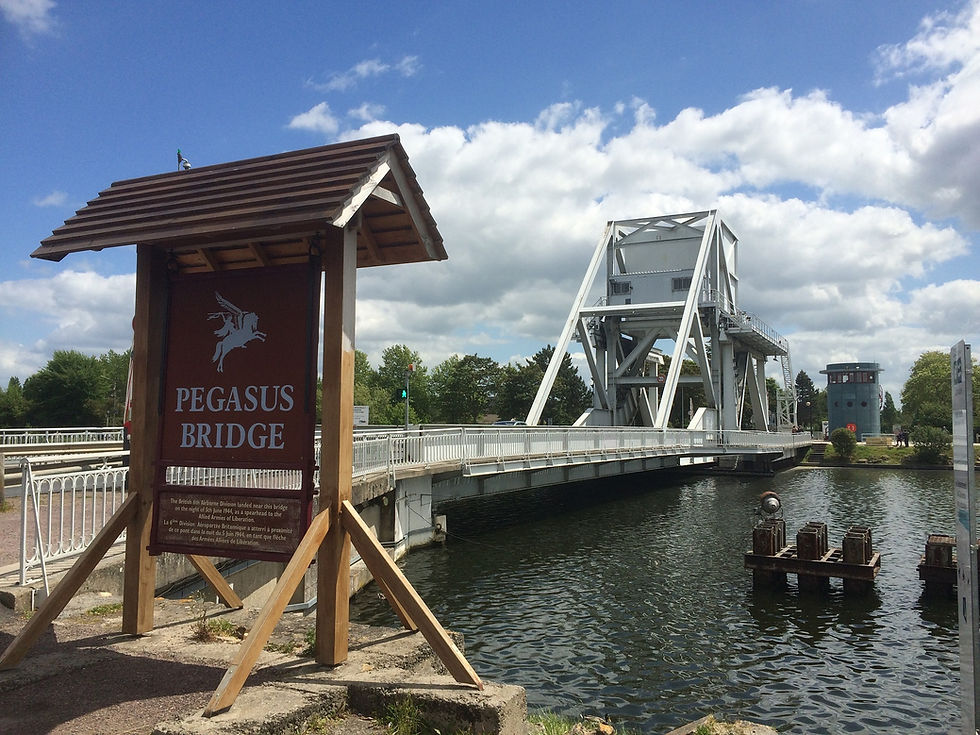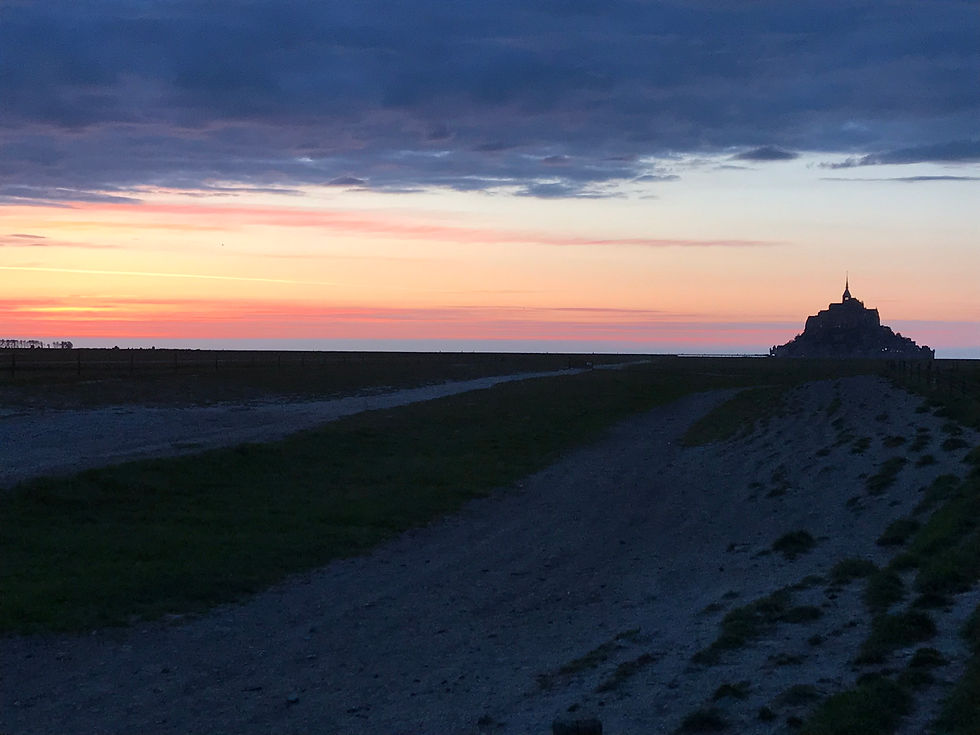Riding through history
- Peter Richards

- Jul 22, 2020
- 5 min read

Normally my blogs reserve themselves to the rides, the stay and the experience of the WAMC adventures. However I seldom go cycling on any of our popular routes without being reminded of recent (and ancient history) as our group passes through some of the ‘way-points’ that mark our journey. Wherever you cycle in Normandy and Brittany the often perfectly serviced roads, now smooth and un-pitted, transports our group over some fascinating routes. However, this was not always the case and the area has born witness to much historical upheaval – notably the events of the D Day landing.
Our ‘vintage’ tour starts after we disembark at Ouistreham, near Caen. About 10 miles south of the port our group always stops at Pegasus Bridge where I try to do justice to the remarkable story of the British commandos whose glider borne operation remains unique in the annals of warfare.

Led by Major John Howard six platoons of infantry landed with pinpoint accuracy in the pitch-black night in their wooden Horster gliders where they engaged the enemy and took control of the vital Pegasus and Orme Bridges. It always amazes me that most of the participants, including the pilots, were in their ‘teens or early 20s.
Our journey takes us through the coastal towns that saw violent action during the war and the places are marked in plain sight with artefacts of the conflict like tanks or artillery pieces on roadside display. We cycle past Sword, Gold, Juno and Omaha beaches each of which had their own parts to play in the landings.

After a slightly demanding peddle up to the summit overlooking Arromanches-les-bains the remains of the vital floating harbour are still very much in evidence on the beaches below. During the Invasion it was part of the Gold Beach landing area and was taken by the British 50th Division. Arromanches became one of two assembly points for the Mulberry artificial harbours (the latter destroyed by storms).

A little further down the coast we come across Omaha Beach where the main US forces landed and who suffered major casualties. It is a very sobering part of our journey to see these beautiful and haunting coastal areas which have mile after mile of stories attached to them.
We turn inland toward Bayeux, a small town in France where we arrive an hour or two later. This little medieval town is dwarfed by its gothic cathedral and is home to the famous Bayeux tapestry telling the story of another invasion but this one in the other direction.

Almost a millennium before, England was defeated by William the Conquerer whose forces were based throughout the region. In the last century the D-Day invasion struck the beaches north of this town on June 6th, 1944 and Bayeux was the first French town liberated from Nazi occupation during World War II.
Our next port of call is Carentan another beautiful Norman town surrounded by vast wetlands and marshes teeming with wildlife - but it is most famous for the site of the Battle of Carentan fought shortly after the D Day landings. The town was one of the first objectives for the Allies and the 101st Airborne Division were assigned the task of its capture so that the US forces landing at the beaches could link up. Although American troops arrived at Carentan on the 9th June, it took several days of fierce fighting, between US and German paratroopers at the Battles of Carentan and Bloody Gulch (just outside the town). They were each immortalised in the TV series Band of Brothers.


Our home for the night is Pont Brocard which hosted its own battle and is close the town of St. Lo – the City of Ruins- so called because of the damage wrought upon it by wave after wave of Allied bombers in their efforts to repulse the German occupiers. We are hosted by the highly knowledgeable welovenormandy.com - a local travel company who introduce our group to the incredible diaries of Lieutenant Helms (just follow this link https://bit.ly/2uI1aWv ).
We are well on way to Mont. St Michel and after another not insignificant hill climb take a breather in Avranches. It is an historical city that was once a royal city under Louis IX, and saw an important battle following the Allied Invasions. Under Louis IX, fortified walls were built and Avranches became a royal city. The town subsequently suffered damage during the 100 Years War and the Wars of Religion. History saw it change hands over the centuries from the Celts, to the Saxons, to the Franks and then to the Germans in the last century. It received its worst damage of all during the Allied bombings of WW2, which destroyed much of the town.

The breakthrough of Avranches on 31 June 1944, led by General Patton, was an important victory for the Allies, pushing US troops ahead into Brittany. A memorial to General Patton stands in Patton Square close by to a Sherman tank.

Leaving Avranches takes us on a fast descent out of town toward Mont St Michel where we arrive 2 hours later. Happily ‘le Mont’ was of no strategic value to the Germans and it saw ‘no action’. The first German soldiers arrived at the Mont June 20, 1940 who went… shopping. Several days later the Germans installed an aircraft observation post, with a garrison of only 5 men. A few custom officers and SS joined the garrison later.
Our last destination St-Malo has a long and compelling history and was founded in the 1st century The Romans fortified the site and it was here in the 6th century that the Irish monks, Brendan and Aaron, established a monastery. The rock that the current town is built on was only connected to the mainland by a narrow causeway of sand. However, the solid ramparts seen today were added in the 12th century. The haunt of pirates and privateers for many centuries it was occupied during World War Two by the Germans who were removed after significant air raids and attacks. It is a lovely town and with a lovely beach at the rear of the citadel.





































Comments